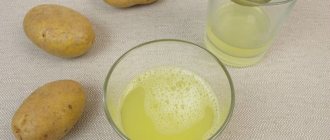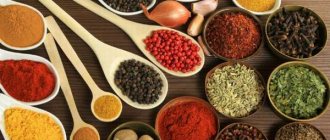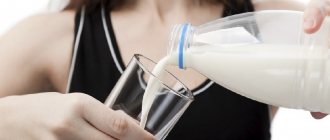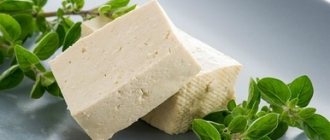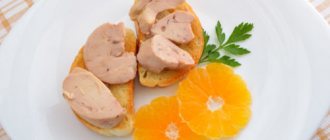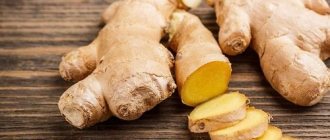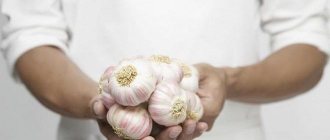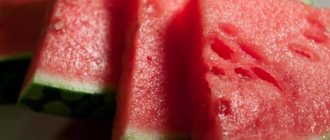Home Diseases and treatment Gastroenterology
13 Feb 2020, 10:00 Anna 21 515
Cottage cheese has many properties that benefit the human body. This fermented milk product is easily digestible and rich in nutrients. Therefore, cottage cheese is a component of dishes in many therapeutic diets. It is prescribed, including for pancreatitis.
Cottage cheese and pancreatitis

Many patients wonder: is it possible to eat cottage cheese when diagnosed with pancreatitis? This is a light product, perfectly absorbed by the body, and it is because of this that it is often a component of many diets, including for problems with the pancreas.
It can be combined with all kinds of foods and dishes, while being introduced into the patient’s diet and as an independent dish. But when introducing it into the diet, you should not combine it with milk - with this tandem, irritation of the mucous membrane occurs and, as a result, irritation and disruption of the stomach.
When diagnosing pancreatitis, doctors recommend consuming large amounts of protein foods, including cottage cheese - it strengthens the pancreas. But it’s enough to immediately make a reservation - you should choose it only with a low fat content, when a product with 3% fat content is optimal. The product is served pureed and it costs no more than 250 grams to consume. per day and 3 times every 7 days.
Cottage cheese pancakes
Cheesecakes are part of the most strict diets. The recipe for cheesecakes usually consists of cottage cheese, eggs and butter. Other ingredients included in a particular recipe determine the variety of flavors of this dish.
General requirements for all recipes - the cottage cheese must be rubbed through a sieve or passed through a meat grinder with a fine grid. Cheesecakes can be boiled or steamed, less often fried in a frying pan. Below are recipes corresponding to diet No. 5p; the recipes can be used in a protein diet, in baby food, and in the diet of healthy people:
Austrian cheesecakes
Ingredients:
- cottage cheese 9% - 1 pack, (200g)
- egg - 1 pc.,
- vegetable oil - 2 tbsp.
- semolina - 2 tbsp.
- powdered sugar - 2 tbsp.
- breadcrumbs
- butter – 2 tbsp.
- vanillin
- salt
Cooking technology:
- Prepare the dough. In the bowl in which we will prepare the dough we place: 1 pack of cottage cheese, 1 egg, 2 tablespoons of breadcrumbs, 2 tablespoons of semolina, 2 tablespoons of vegetable oil, a little vanillin and salt to taste. Mix everything until a homogeneous mass is obtained.
- Boil cheesecakes. We make balls with a diameter of about 4 cm from the curd mass, after wetting our hands in running water so that the curd does not stick. Place the cheesecakes in a pan of boiling water. After 8-10 minutes the cheesecakes will float and we will take them out with a slotted spoon.
- Preparing the breading. Melt 2 tablespoons of butter in a frying pan. Add breadcrumbs. Mix the crackers with melted butter and dry for no more than 1 minute.
- Cheesecakes in a frying pan. Place the cheesecakes on the frying pan and vigorously shake the pan so that the cheesecakes are wrapped in breading.
- Prepare the sauce. Place 3-4 canned peaches in a large glass and blend with a blender.
- Serve to the table. Place 2-3 spoons of sauce, two cheesecakes into portioned plates, sprinkle with powdered sugar, and you can decorate with berries and herbs. Bon appetit!
Addition to the recipe. If you put an apricot in the middle of the cheesecake, from which the stone has been removed and marzipan (a mixture of sugar and grated almonds) or just a piece of sugar is inserted, the dish will acquire an exquisite taste. But in this case, the cheesecakes will float in 10-12 minutes, because... have a larger size.
Cottage cheese dumplings
It is known that during the heat treatment of cottage cheese, nutrients are destroyed, including protein denaturation (destruction of protein). I offer you a recipe - “Cottage cheese dumplings”. With such minimal thermal processing, protein and other nutrients are preserved as much as possible.
Ingredients:
- cottage cheese - 1 pack, 200-250 g (mashed through a sieve or minced)
- egg - 1 pc. (in diet No. 5p, take the white of 1 egg)
- butter, melted – 1 tbsp
- salt, honey (sugar) - to taste
- flour - 0.5 cups
Cooking technology:
- Place a pan of water on the stove and add salt to taste.
- Let's knead the dough from the suggested ingredients. Flour is added after kneading the dough to avoid lumps.
- We form a “sausage” by rolling out the dough on a cutting board (to prevent the dough from sticking, dust the cutting board with flour).
- Press down the “sausage” so that the cut is an oval, not a circle, and cut the “sausage” into diamonds. Place the dumplings in boiling water for 5-7 minutes. The finished dumplings float up.
- Using a slotted spoon, place into portioned plates. In accordance with diet No. 5, we eat dumplings with kefir or 10% sour cream.
Note. Dumplings can be prepared for future use, just like dumplings.
Ingredients:
- cottage cheese 9% - 1 pack, (200g)
- egg - 1 pc.,
- butter – 0.5 tsp
- sour cream 20% - 1 tbsp
- semolina – 1 tsp.
- flour - 0.5 cups
Cooking technology:
- Add semolina, eggs, sugar to the pureed cottage cheese.
- Mix the mixture well, shape into a 1.5 cm thick meatball (3 pcs per serving), and bread in flour.
- Place in a baking tray greased with butter and bake in the oven for 25-30 minutes.
- Serve with sour cream, milk or sweet sauces.
Nutrient content per 100 grams of dish:
- Proteins - 24.42 g
- Fat –22.26 g
- Carbohydrates –18.49 g
- Calorie content, Kcal – 516.41
- AT 10
- IN 20
- C - 0
- Ca- 171.551 mg
- Fe - 3.8271 mg
Cheesecakes with carrots
- Ingredients:
- cottage cheese 9% - 1 pack, (200g)
- egg - 1 pc.,
- butter – 1.5 tsp
- sour cream 20% - 2 tbsp
- semolina – 3 tsp.
- flour - 3 tsp.
- salt, sugar - to taste
carrots - 90 g
Cooking technology:
- Chop the carrots on a coarse grater, simmer with butter, adding a small amount of water (10% water to the weight of the carrots).
- Add semolina, stirring until it swells. Cool.
- Grind the cottage cheese, add semolina, eggs, sugar. Combine with cooled carrot mixture;
- Add flour to the curd-carrot mixture - 2/3 of the total amount. Mix.
- Form cheesecakes from the prepared mixture, bread them in the remaining flour and fry. Serve with sour cream.
Nutrient content per 100 grams of dish:
- Proteins - 12.04 g
- Fat –7.43 g
- Carbohydrates –10.87 g
- Calorie content – 276.7 Kcal
- AT 10
- IN 20
- C - 0
- Ca- 0 mg
- Fe - 0 mg
Cheesecakes Kiev style
Ingredients:
- cottage cheese 9% - 0.5 kg
- wheat flour - 1 tbsp.
- egg - 1 pc.,
- apple - 1 pc.
- sugar - 5 tbsp.
- powdered sugar - for decoration
Cooking technology:
- Put apple, raisins, sugar in a saucepan. Apple - peeled and grated on a coarse grater. The raisins are washed well. Cook over low heat for 15-20 minutes, cool.
- Combine cottage cheese, flour, sugar and mix well. Add the egg and mix well again until the consistency is homogeneous.
- We form a “sausage” by rolling out the dough on a cutting board (to prevent the dough from sticking, dust the cutting board with flour). Cut the “sausage” into portions.
- We slightly squeeze the portions, forming circles, in the center of which we put the filling of apples and raisins (see point 1), pinch the filling on top (as you would do in dumplings). Give it an oval shape.
- Bread the cheesecakes in flour and fry them in a frying pan until golden brown.
- Bring the oven to 180 degrees until ready. 7-10 min.
- Serve to the table, sprinkle the cheesecakes with powdered sugar and sour cream. Bon appetit!
Note. You can make the filling your own way. For example, it turns out delicious if you add raisins to jam that you have at home. Boil for 10-15 minutes and cool. The filling is ready.
Nutrient content per 100 grams of dish:
- Proteins - 10.98 g
- Fat –11.27 g
- Carbohydrates –29.25 g
- Calorie content – 357.67 Kcal
- B1 –0.3713 mg
- B2 – 2.041 mg
- C - 7.1106 mg
- Ca- 11.7753 mg
- Fe - 10.5592 mg
Cheesecakes made from cottage cheese and potatoes
Ingredients:
- cottage cheese 9% - 1 pack (200 g)
- boiled potatoes - 200 g (2-3 medium potatoes)
- wheat flour - 2 tbsp
- butter - 1 tsp
- egg - 1 pc.,
Cooking technology:
- Crush the boiled potatoes thoroughly,
- add grated cottage cheese, eggs, 2 tbsp flour, salt and mix.
- Form the resulting mass and bread it in flour.
- Fry in a hot frying pan for 2 minutes on each side over medium heat, with the lid open.
- Close the pan with a lid and cook for another 2 minutes. The cheesecakes will become more fluffy.
- Serve cheesecakes (4 pieces per serving) with sour cream or butter
Nutrient content per 100 grams of dish:
- Proteins - 10.81 g
- Fat –5.4 g
- Carbohydrates –9.31 g
- Calorie content – 229.7 Kcal
- B1 –0.4827 mg
- B2 – 0.1234 mg
- C - 0 mg
- Ca- 7.4012 mg
- Fe - 1.8583 mg
pancr.ru
Cottage cheese and the acute form of pancreatitis
After the patient has completed a course of therapeutic fasting, cottage cheese can be added to the menu for 2-3 days. The main thing in this case is to observe the principle of fractionation, when food is consumed often and in small portions, and also not combining cottage cheese with milk - this can lead to irritation of the pancreas.
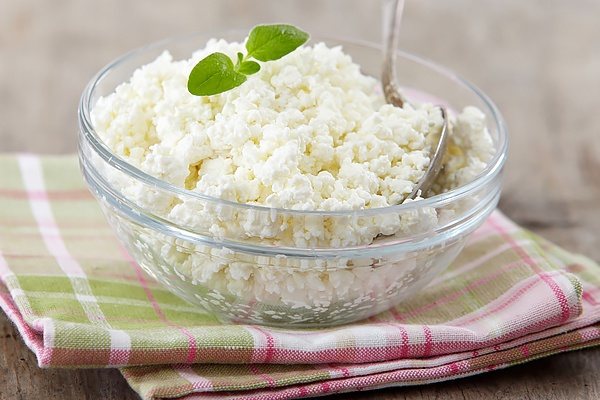
Low-fat cottage cheese
Speaking about what kind of cottage cheese you can eat with pancreatitis, in order to avoid provocation and the development of an exacerbation of the diagnosis, it is worth taking into account certain points. Speaking about what kind of cottage cheese you can eat for pancreatitis, it is worth introducing into your diet a product whose fat content does not exceed 3%. The product itself must be fresh - you should buy it from a trusted seller or you can prepare it yourself.
To always eat cottage cheese fresh, preparing it yourself is not difficult. In this case, take 1 liter. milk and boil it, then pour the juice of ½ lemon into it and when it curdles, remove the pan from the stove. Strain the whey through two layers of gauze - when all the excess liquid has drained, the homemade fermented milk product is ready for use. The lack of calcium can be compensated for by consuming a fermented milk product enriched with this element, but still you should not abuse it too often - consuming it 2-3 times a week will be sufficient.
How to choose the right product
You should only buy a product for preparation and consumption that meets all production and storage standards. That is why doctors do not recommend buying the product from unknown sellers on the market, or at any other points of sale where there are no quality certificates.
Doctors also advise that when purchasing a given product, you should always look at its composition, especially if you buy curd mass in briquettes in a supermarket, look at the production date and expiration date. If a person with pancreatitis eats an expired curd product, there is a high risk of infection with intestinal bacteria. And they, in turn, can lead to exacerbation of pancreatitis and the manifestation of its severe complications. The product should be stored for three days, no more. The optimal temperature for storage in the refrigerator is about 8 degrees.
Cottage cheese for chronic pancreatitis
When the disease worsens, when introducing a menu into the diet, you should adhere to certain principles. When inflammatory processes subside and in the absence of intolerance to the cottage cheese itself, which manifests itself in nausea and vomiting, diarrhea, the fat content of the consumed product can be gradually increased to 4 - 5%.

Doctor's recommendations
During remission of pancreatitis, the percentage of fat content of the consumed fermented milk product can be gradually increased to 9%. In this case, it is served in the form of a soufflé and in combination with all kinds of cereals, pasta or meat. Lazy dumplings and baked goods without baking, with the addition of cottage cheese, casserole, and mousse can be introduced into the patient’s diet.
Speaking about whether it is possible to eat it with pancreatitis, dishes in which a larger percentage of the ingredients are cottage cheese, it is worth remembering that it itself can cause an exacerbation of the disease if the remission of the disease is not sufficiently stable. At the same time, a large percentage of fat content is always not only a burden on the digestive tract, but also a slowdown in the absorption of such an important element as calcium. But, first of all, when deciding whether cottage cheese itself can be introduced into the diet, it is definitely worth saying that it is possible, but after consulting with a gastroenterologist.
What dairy products can be used for stomach ulcers: milk, kefir, yogurt, cheese, butter, sour cream?
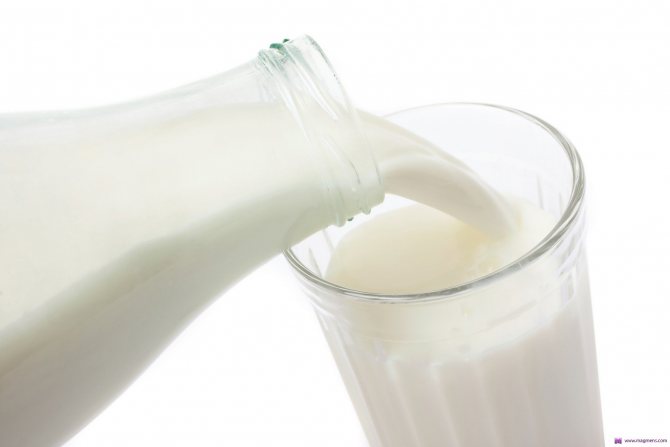
Gastroenterologists are confident that milk and fermented milk products can be used for stomach ulcers. After all, they contain amino acids, water- and fat-soluble vitamins, enzymes, minerals, and macroelements. Therefore, these products have such high biological nutritional value for the body.
Dairy products for stomach ulcers are taken as the basis for a therapeutic diet, since they do not stimulate the digestive glands, causing weak secretion, which helps the organ work better, relieving painful symptoms and speeding up recovery.
With a strict diet in the acute phase and a less gentle diet, milk for a stomach ulcer must be present on the patient’s table every day.
Milk and fermented milk products for ulcers can supply the body with the necessary set of fats, proteins and carbohydrates. This tasty, healthy drink contains complete animal protein that is quickly and easily digested. For example, by drinking a glass of milk at night, you provide the body with the necessary supply of calcium and phosphorus.
Milk soups with cereals, noodles, vegetables, porridge with milk, cottage cheese soufflés, casseroles, sour cream sauces are the basis of therapeutic nutrition for ulcers.
Nutritionists clarify that it is allowed to include pasteurized low-fat cow's and goat's milk in medical nutrition without additional heat treatment (boiling). But for stomach ulcers, it is recommended to dilute goat milk by half with clean water, reducing its high fat content.
Fermented milk products for ulcers
Nutritionists insist that people with stomach disease must include lactic acid products in their daily diet, which help secretion, ease the course of the disease and reduce painful symptoms. The most popular and useful products are:
Kefir and fermented baked milk
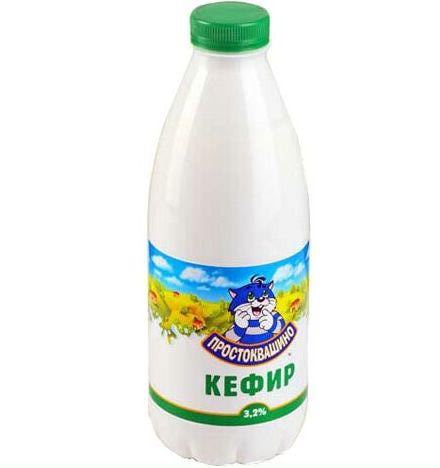
A distinctive feature of the product is its rapid digestibility. Kefir is absorbed by the body three times faster than the milk from which it was made.
Daily fresh kefir weakens, enhancing intestinal motility. A drink stored for a longer time becomes stronger.
Is it possible to use kefir for an ulcer? The answer will not be clear. If you have a stomach ulcer, you can drink kefir during stable remission, following the following rules:
- The drink must be fresh and not very sour in taste;
- Kefir for stomach ulcers should be at room temperature. But the drink should not be heated; it will be better if it warms up on its own, gradually acquiring room temperature. To do this, kefir must be taken out of the refrigerator in advance;
- Do not overuse the drink or mix it with other products. One glass of wave is enough in a patient’s daily menu. You can use kefir as a daytime snack or a late dinner before bed;
- If the disease in the acute phase and exacerbation last less than five days, then kefir for ulcers is prohibited. Fermented milk drink, irritating damaged mucous membranes, can cause discomfort and acute pain.
- Unlike kefir, fermented baked milk for stomach ulcers is not prohibited if there is an exacerbation and one condition is met - the drink must be fresh and low-fat.
How to make kefir at home?
To prepare a fresh drink you will need:
- 2 small spoons of store-bought kefir for starter;
- 1 liter of milk boiled and cooled to 25 °C;
Mix all ingredients and place in a warm place to ferment for 4 hours. The resulting kefir must be drunk throughout the day. The remaining drink, aged for three days at a temperature of 8 ° C, can later be used as a starter.
Yogurt
A product made from milk by fermenting it with Bulgarian bacillus and lactic acid streptococcal strains.
Preparation involves the use of skim milk powder, which increases the protein content in its composition by 5%. Helicobacter pylori is a spiral-shaped microorganism that causes stomach ulcers. Live yogurt can affect stomach ulcers, suppressing their development.
When choosing yogurt, it is better to give preference to natural low-fat fruits and berries with minimal or no sugar content.
Cottage cheese and sour cream
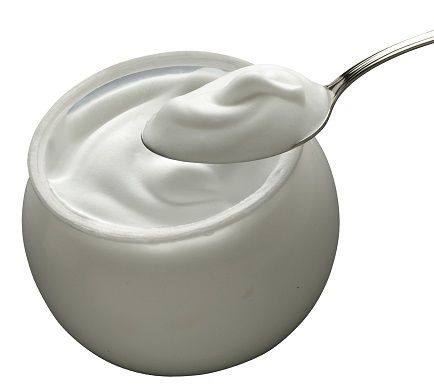
Cottage cheese for ulcers is a product with high biological value, which is widely used in therapeutic dietary nutrition.
Cottage cheese is coagulated protein (casein) separated from whey. The product is rich in phosphorus and calcium salts, vitamins B, PP, A, and p-carotene.
Cottage cheese for stomach ulcers is served on the table, mixed with sugar, milk or low-fat sour cream, and used to prepare soufflés, casseroles, cheesecakes, and sweet curd desserts.
For a diet menu, it is better to use low-fat cottage cheese.
Curd mass and sweet cheese curds from cottage cheese have no place in the diet of an ulcer sufferer. They contain a lot of fat and are difficult to digest.
Sour cream is a fermented, fatty, perishable product. The percentage of fat content is indicated on the packaging. Sour cream for stomach ulcers is added to soups and used in the preparation of milk sauces and desserts. When choosing sour cream for a diet, you should give preference to a product with 10% or 15% fat content.
How to make low-fat cottage cheese yourself?
Recipe No. 1
- 1 liter of low-fat (2.5%) milk;
- 3 large spoons of any fermented milk drink (kefir, yogurt, sour cream);
Cool the boiled milk to 30°C, then add the starter, mix and keep warm. After eight hours, place the fermented milk in a colander lined with gauze, or pour it into a fabric bag, and then hang it over the container so that the whey separates.
Pour a liter of kefir into an enamel bowl and, stirring constantly, cook in a water bath until it curdles. It is important not to overheat the drink, so boil the water for the bath over low heat. Then discard the kefir to separate the whey as in the previous recipe. Cottage cheese for ulcers, prepared independently, can be served with jam or sour cream.
Cheese
Is it okay to have cheese if you have an ulcer? Despite its high calorie content, cheese for stomach ulcers is considered one of the healthiest foods, which is easily digested and contains a lot of protein. Proteins are quickly absorbed because amino acids are broken down during the cheese making process.
Cheese for ulcers is included in the diet when the patient does not have an exacerbation.
Butter
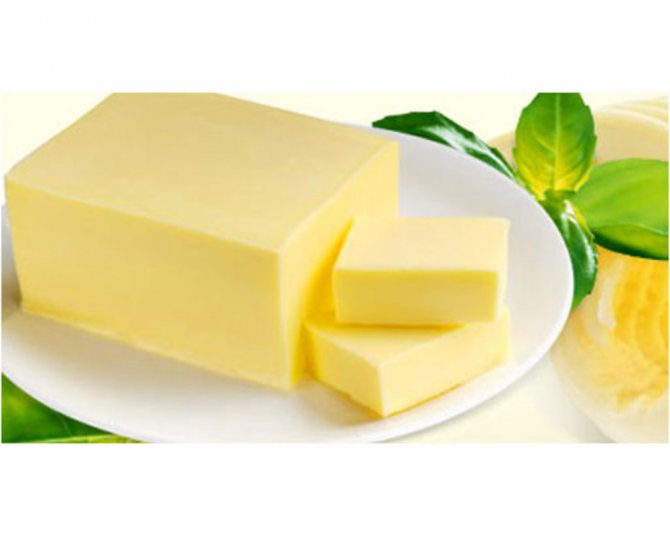
The fat concentrate contained in milk is characterized by a fractional structure of fat globules. This explains why the product is quickly and easily absorbed. For stomach ulcers, butter can only be used fresh, adding it to ready-made soups, porridges, and sauces. During heat treatment, oil loses its valuable qualities and can be harmful to health.
